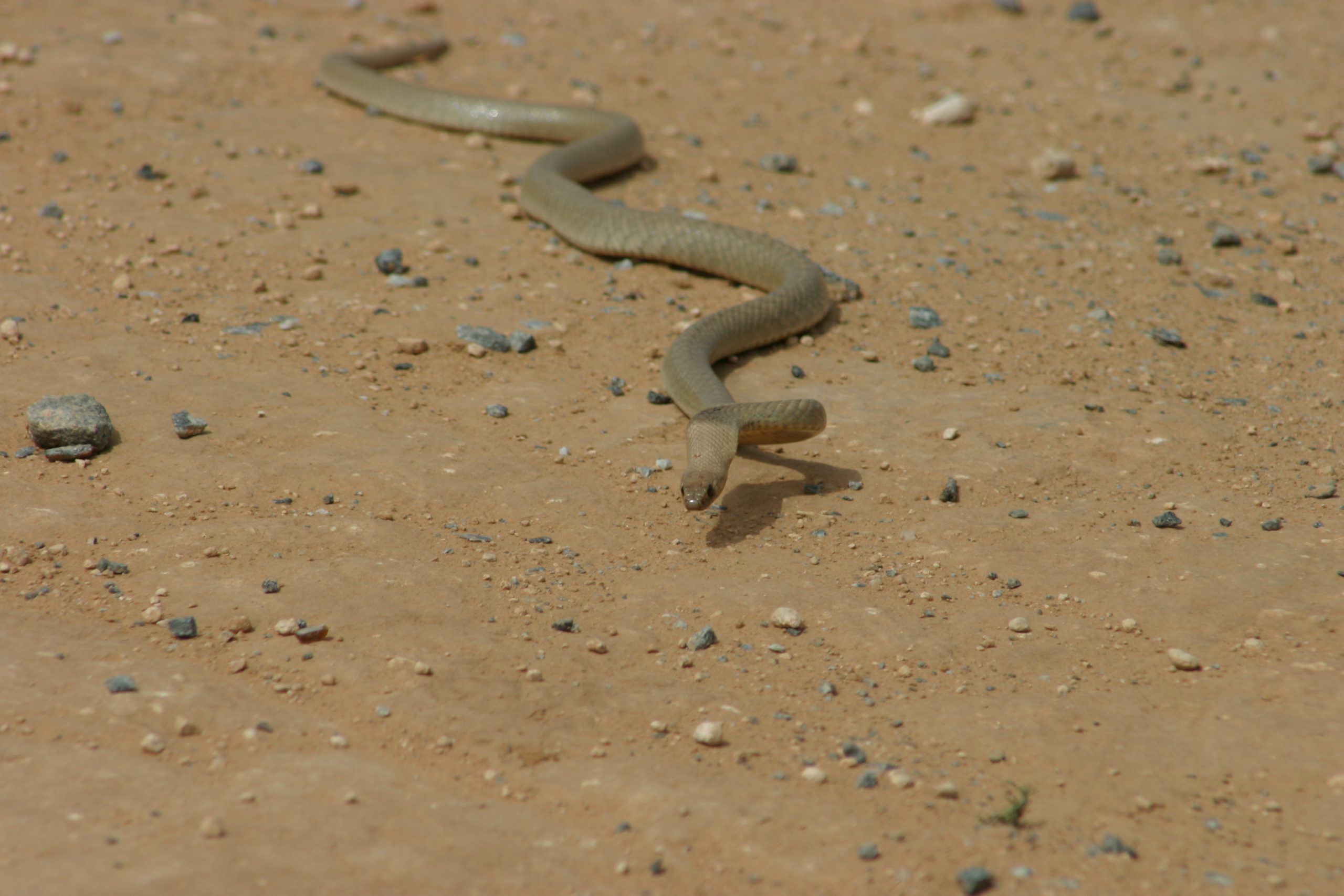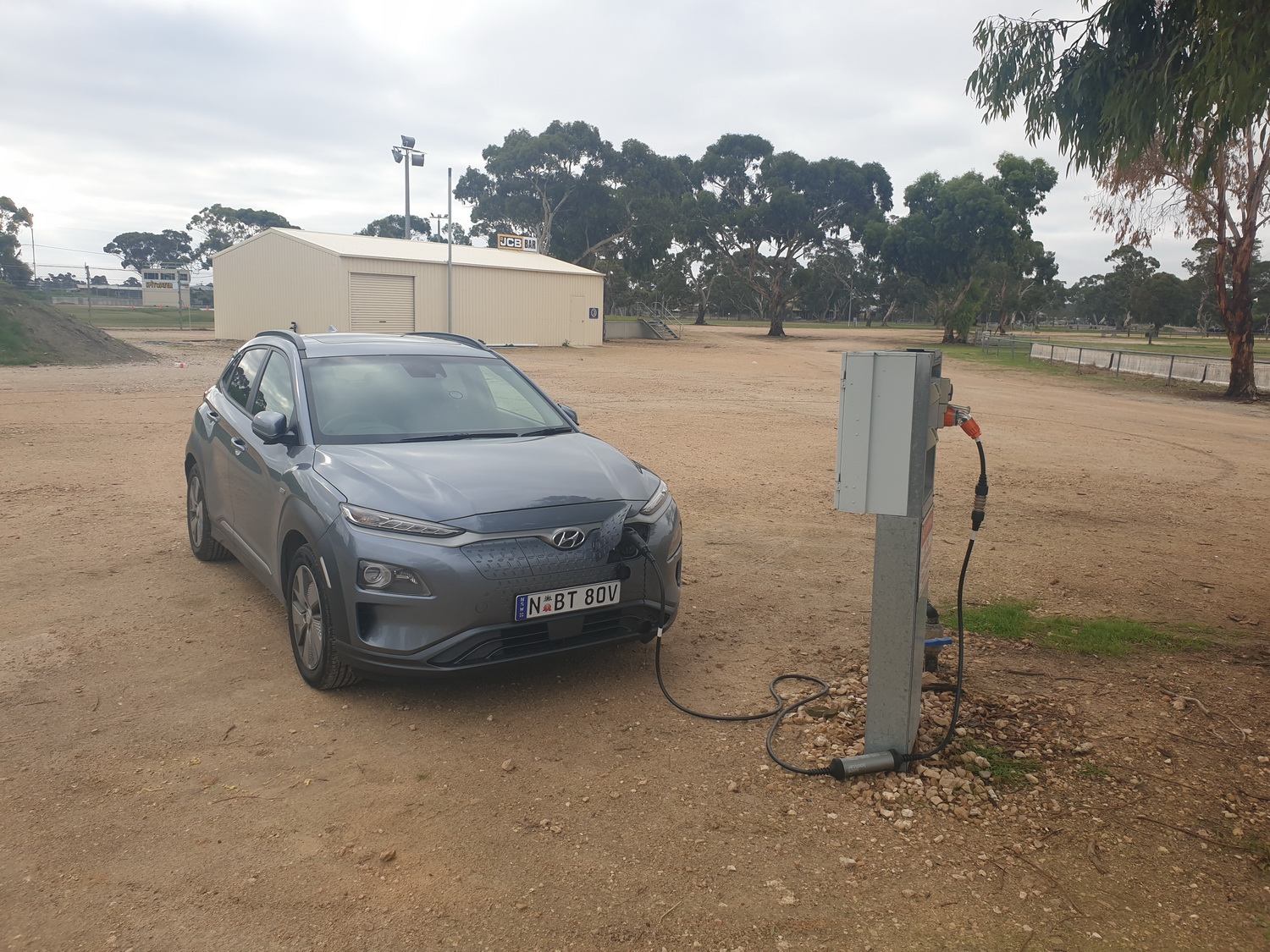
Snakes and 4X4s
When you go bush you enter the territory of our native animals, and for a harmonious relationship it’s best to understand your environment.
Are snakes feared because they are misunderstood, or misunderstood because they are feared?
The fact is that most of Australia’s 500 snakebites per year happen to professionals or people being silly, and the Bureau of Statistics tells us that over the ten years from 1999 to 2008 there were 32 deaths involving power tools, 23 from bee/hornet sting and 21 due to snakes. This low risk of mortality doesn’t stop us being scared, and indeed there are occasions when we may need to deal with a snake. Whether you do so successfully starts with understanding snake behaviour.
The first point is that generalisations about snakes is difficult as there are many exceptions to most rules. Almost all snakes will move out of the way, except the death adder, their personality varies, some are very close to blind but others have keen eyesight, and not all facts about Aussie snakes apply to their foreign cousins. But there are a few rules – all snakes can swim and climb, and they are all completely deaf so yell as much as you like, they can’t hear you, but to some extent some species can pick up vibrations through the ground. Like all reptiles, snakes are sluggish in the cold so don’t expect them to move fast first thing in the morning. The snake’s primary sense is taste; snakes flick out their tongue to taste the air, and can determine direction of interesting smells from the two forks on their tongue. Snakes are solitary not social, cannot hypnotise anything, hoop snakes do not exist, they don’t drink milk, they operate on primeval instinct, not intelligence so have no capacity for revenge, no snake or reptile “keeps others away”, their skin is not slimy and the average offroader can usually run faster than any of Australian’s 140 species of snake can travel.
The really important fact about all snakes is that none of them want to be involved with humans, because they view these large, tall animals as a threat to their life in the same way you’d be scared of an elephant if you didn’t know what it was. The snake’s first instinct is to get away, but if that isn’t possible they will warn and then, as a last resort, defend. The snake catchers we spoke to were adamant that snakes do not lie in wait for people, strike out of hatred for humans, or chase. Sometimes the snake is not aware of a human as it travels at high speed, but the human may be very much aware of it! Any ‘chasing’ is actually an extended strike, or perhaps the snake sees an exit route and dashes for freedom – if that route involves going closer to a human that’s a tradeoff the snake may make or not even be aware of, but to the human it looks like an attack. And this is a very important point, because it’s a misunderstanding between snake and human. What looks like an innocent move by one is interpreted by the other as hostile, and what one party considers a clear warning is taken by the other as imminent death. If hissing and raising its body up doesn’t work, then the snake may try a ‘miss’ bite, never intended to actually reach you, just send a stronger message. Even if it does bite it may be a ‘dry’, that is without any venom injected. Do not, however, count on this and treat every bite as serious, not matter what snake it appears to be from as there’s always the risk of infection. A snake can strike from any position, although it may curl itself up slightly in preparation from a strike to gain extra distance. Some species can strike extremely fast and cover a couple of metres in an instant.
So with that in mind, let’s work through a couple of situations where you might encounter snakes. Let’s say you see one a several metres away, but it’s an open area where the snake (and you) both have clear escape routes. That’s no problem, just don’t go any closer so it doesn’t consider you a threat. Back away slowly, and that works too even if you’re as close as a couple of metres. What you must not do is make sudden movements. All animals, humans included, interpret sudden movements in tense situations as hostile.
If you’re closer to the snake, say a couple of metres or less where you’ve just happened upon it, then don’t move, freeze. Most people will find this quite easy. Remember, any movement will be viewed as hostile. Look at the snake’s body language. If it’s warning you, with a raised body and hissing, very, very slowly back away if you can. You can shout for help all you like, that won’t bother the snake, but don’t go waving arms around. Any helpers need to make sure they don’t make things worse by introducing new threats to the snake, as confused and scared animals are dangerous animals. If you freeze, you present less of a threat. After a few moments the snake, realising it hasn’t been attacked, may calm down and forget you entirely. Imagine you’re on a deserted railway station and you see a huge thug appear; initially, you’ll be scared, but after a short while when you not lying in a pool of blood you’ll start to relax, although you’ll still be wary.
Sometimes a snake will just appear very close to you, even around your feet, apparently oblivious to your presence. That’s because it actually is oblivious to your presence, otherwise it wouldn’t be there. The response here is definitely to freeze. Imagine you were walking in the woods and one of the trees suddenly started waving its branches around and dancing. You’d be scared, and again, scared animals are dangerous animals. The second reason to freeze is because you don’t want to step on the snake, and if your feet leave the ground that becomes a possibility. Consider your weight vs that of a snake. It’s going to hurt, and what do you do if someone unexpectedly hurts you? Just remain absolutely still and wait for the snake to wander off, or if it doesn’t, then very, very slowly and carefully make tiny movements to escape.
If you see a snake somewhere you don’t want it to be then you can either leave it alone, or you can decide to move it. Be aware that if you decide to move it then the chances of you joining the list of people bitten each year instantly become dramatically higher, so it’s not recommended, but there’s a few ways to do it. Spraying water on it, throwing leaves, sand or dirt have all worked.
Don’t think that you can easily identify the snake, either; that’s a very difficult task as not only do many different species look very alike, but snakes from the same species can look very different. Brown snakes are split into several sub-species, for example Western, Eastern and Speckled Browns, within those are wildly different colour schemes, and snakes change colour depending on age. In short, anyone that glances at a snake and makes a positive identification is often being a bit optimistic. Which snake is the most dangerous? It doesn’t matter, leave them all alone and like all native animals, all snakes are protected by law so it is an offence to interfere with or kill them. The danger rating of a snake varies according to the potency of its venom, its propensity to attack and the quantity it can deliver so while the brown snake is doesn’t top the venom-lethality list, its relative size and aggression makes it one of the lethal reptiles.
If you are driving and see a snake do not attempt to avoid it by swerving, as history shows this is an excellent way to hit it anyway, but with your roof. In my experience, the snake is as likely to instantly panic and double-back into danger as keep going straight, so just brake as safely as you can and hope. The chances of the snake being flicked up into the chassis where it travels with you are negligible and it is far more likely the snake will be killed outright or fatally injured.
There also no point ‘avoiding snake areas’. We once saw a family arrive, set up camp, spot a snake, and then pack up and move away because they were worried about snakebite, and on the way out gave us some bother because of the apparent threat to our own children. Fact is, snakes are everywhere in the bush, but you just don’t see them. When people call a snakecatcher they are told to watch where the snake goes, as very often by the time the catcher arrives the snake is nowhere to be seen. There is simply no reason to move camp locations just because you’ve seen a snake. There are ‘snake repellent’ products on the market, but none are known to be effective. If you own a property and want to reduce snake activity then reduce your rodent or frog population, keep the grass short, remove piles of debris or wood (or raise them off the ground) and ensure your doors and windows are sealed as snakes can and do climb.
While you can’t, and don’t need to move away from ‘snake areas’, you can reduce your chances of being bitten. Always zip tents and bags shut, watch where you walk at all times, especially in long grass. Stomping around does not work as the snake may not pick up the vibrations, and even if it does it may not equate it as a threat. Just be observant instead, and watch where you put your hands. Why people would want to shove hands into hollow logs is a mystery but do it often enough and you’ll get bitten. Wear covered shoes and long trousers, as according to the WA police 90% of snakebites are at the ankle or below. If working with woodpiles wear gloves, as another 8% of bites are on the hands. Clothing will help but don’t rely on it preventing a bite or envenomnation. All Aussie snakes have fangs with a groove which venom trickles down, except for the death adder which has a more efficient hollow fang that properly injects venom. But you won’t need to worry about that if you just take the simple precautions described here, and in the unlikely event you are lucky enough to encounter a snake, remember it really is more scared of you than you are of it. Knowledge is the best way to deal with fear, and once you understand snakes your fear is replaced by simple respect and appreciation.
If you’re bitten
It’s really unlikely you will be bitten. An average of two people die each year from snake bite, and in almost all cases they haven’t followed snake-smart advice, for example they have attempted to kill a snake. There’s little chance you would be one of those people if you follow this advice:
- Calm the casualty, and reassure them – the situation is dangerous, but manageable.
- Move them, and their limbs as little as possible so as to reduce the spread of venom around their body. Their heartbeat should be normal, not pumping extra blood.
- Try to have any conversations that might upset the casualty where they can’t hear. As with any emergency situation, anyone who isn’t calm needs to get out of the way as nervousness is contagious and casualties pick up on it.
- Make sure the snake isn’t a threat. It probably has, but some species like the death adders aren’t noted for clearing out quickly. This does not mean put yourself at risk by attacking the snake, it means you moving away.
- Remove items of clothing that could possibly constrict bloodflow – examples include jewellery, anything on the wrist like watches or Fitbits, and any clothing that’s right – but don’t make the person hot or cold, or expose to sunburn, and there’s no need to strip the victim!
- Apply a pressure bandage around the limb, but not such that blood flow is slowed down. Snake venom moves around the body via the lymphatic system, not the blood. The victim should feel the bandage as tight but not uncomfortable. Don’t attempt to cut off circulation as that will reduce the supply of blood to the limb, and blood carries oxygen which the limb needs to function, and anyway blood isn’t even how venom travels around the body.
- Never try to suck or squeeze the venom out, and don’t clean or treat the bite mark as the medical staff will need to take samples from the area so the snake can be identified, which helps with the correct treatment.
- Make a note of the time of the bite, and where the mark is, and any other contextual information.
- Do not attempt to catch or find the snake to identify or kill it. The medics can determine the snake venom type from the bite using a detection kit – which is why you don’t clean it.
- Do not let the casualty drink alcohol or take any drugs.
- Call for medical assistance. It is better for the aid to come to you than you take the casualty to the aid, as the less stress and movement for the casualty the better.
Not everyone realises when they’re bitten. Signs of snakebite include localised pain, swelling, nausea, headaches anywhere from immediately to long as perhaps half an hour after the event, and getting worse from there. Inspect the casualty for snakebite evidence on the limbs. In the northern parts of Australia snakes are active all year round, but in the southern parts snakes spend the winter in a state of brumation (hibernation) in crevices, logs and under rocks, so are usually seen only from about September to April.


